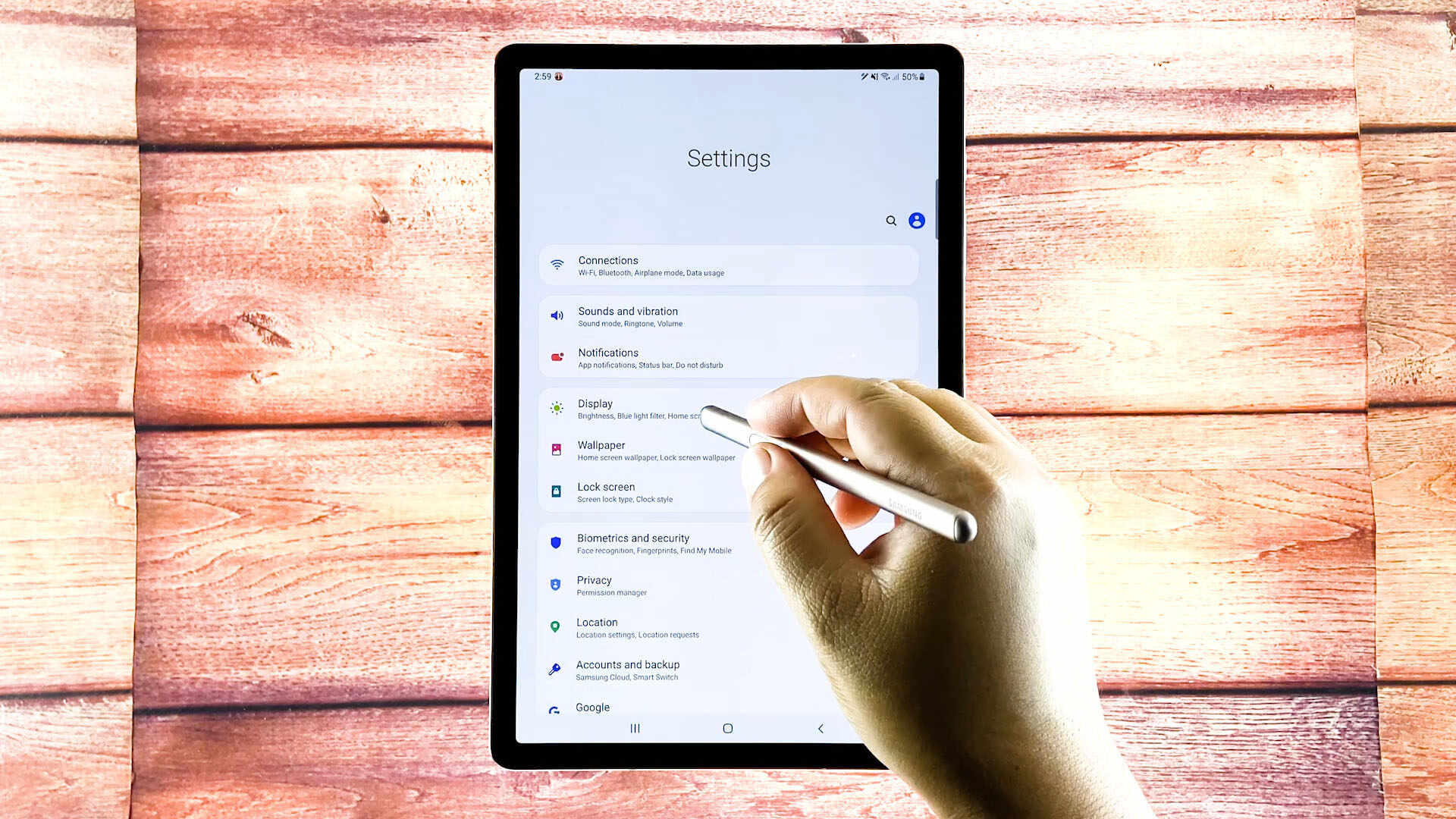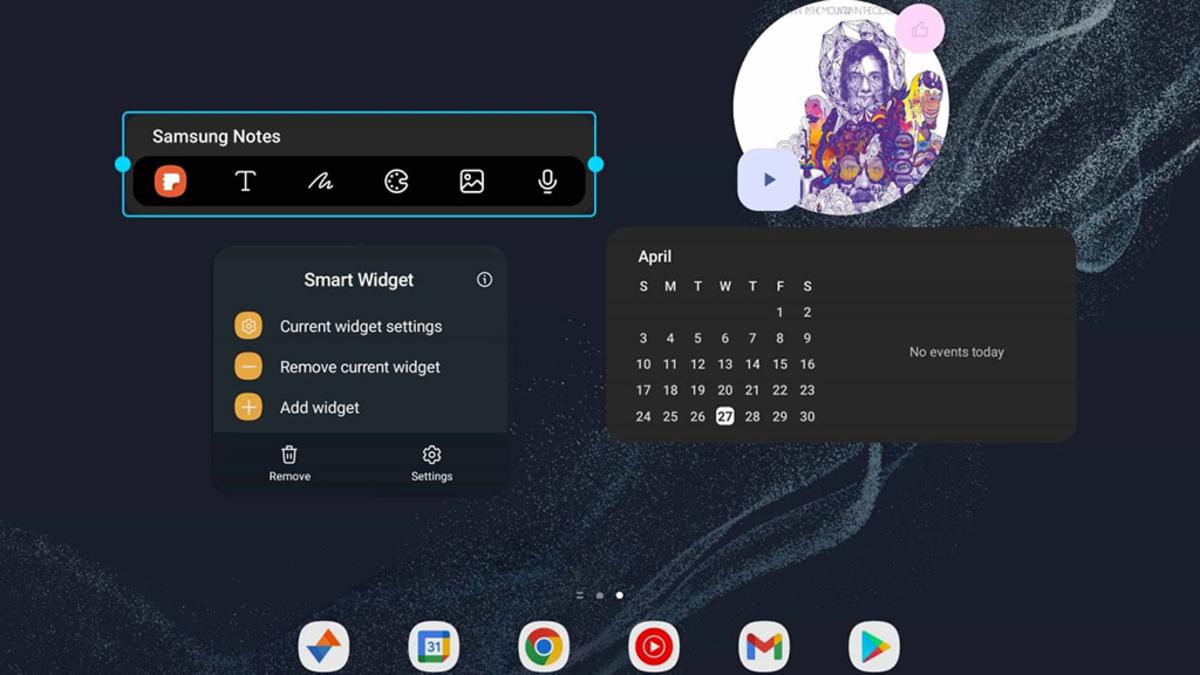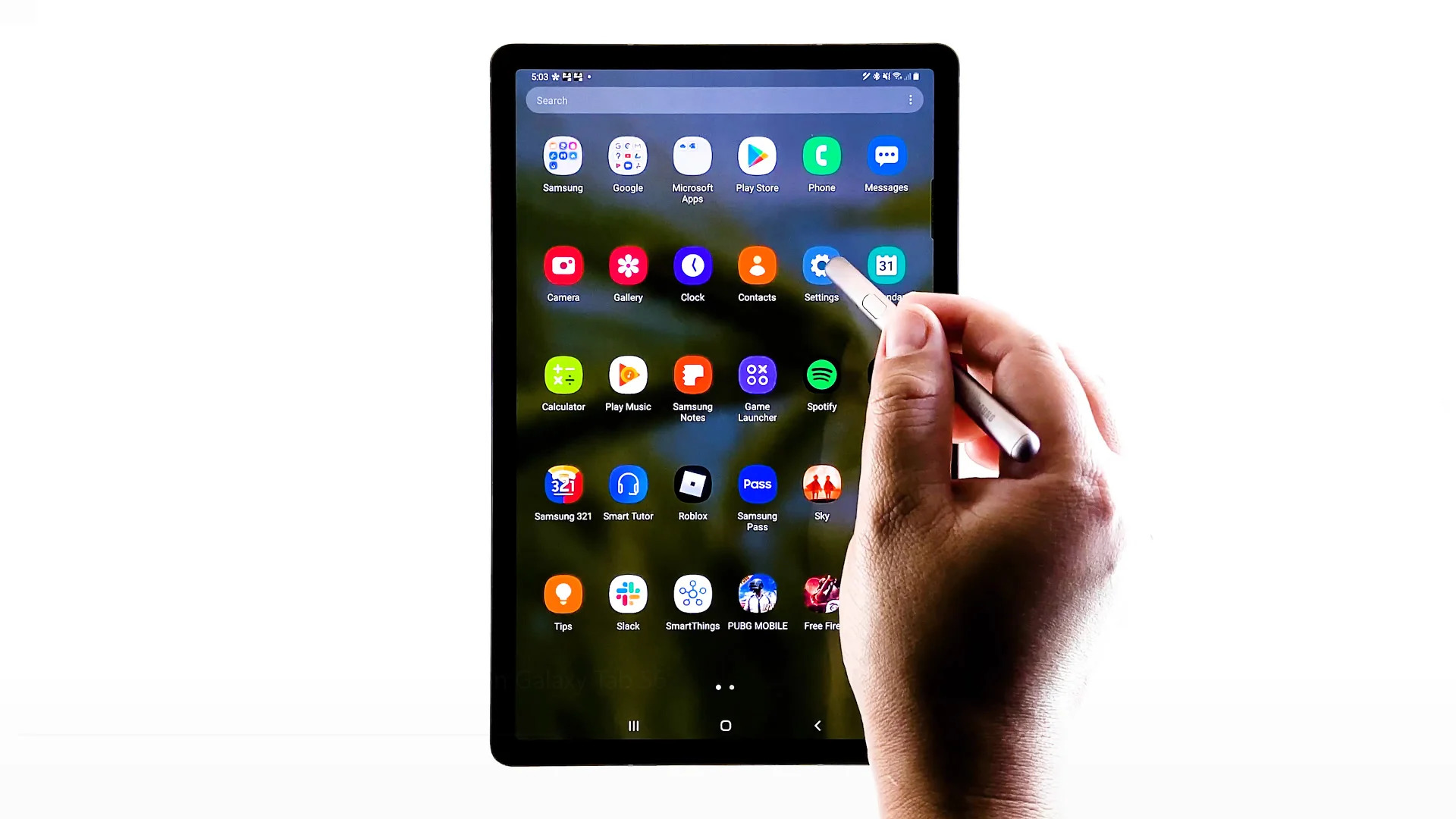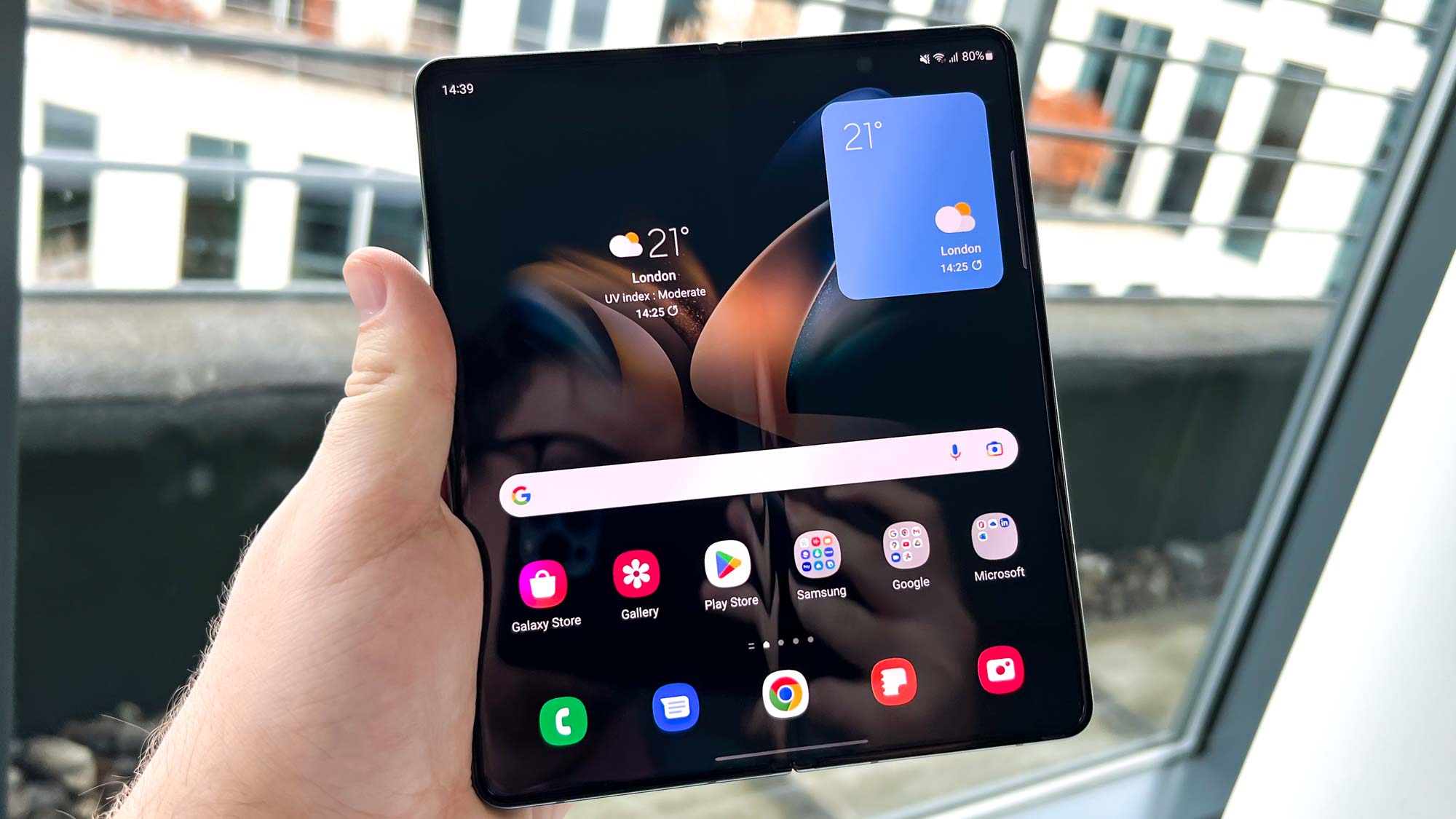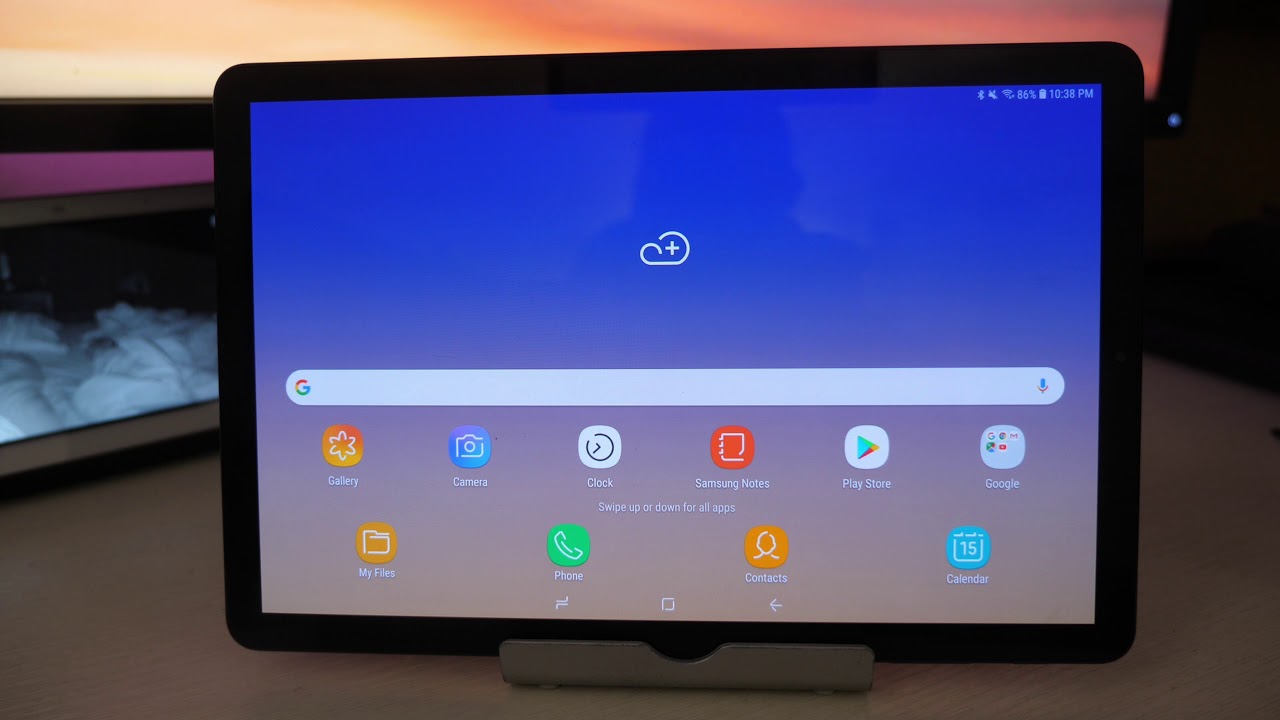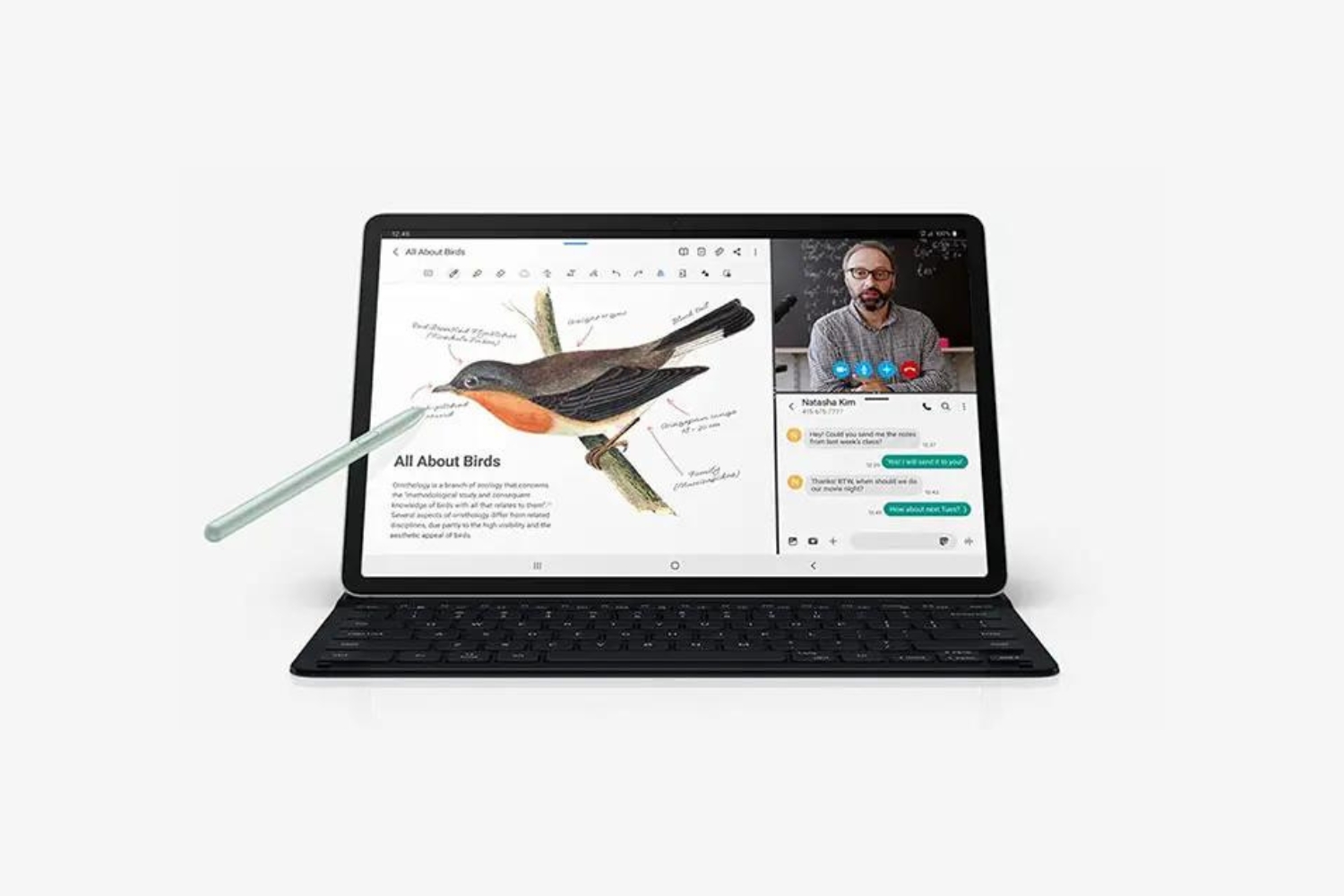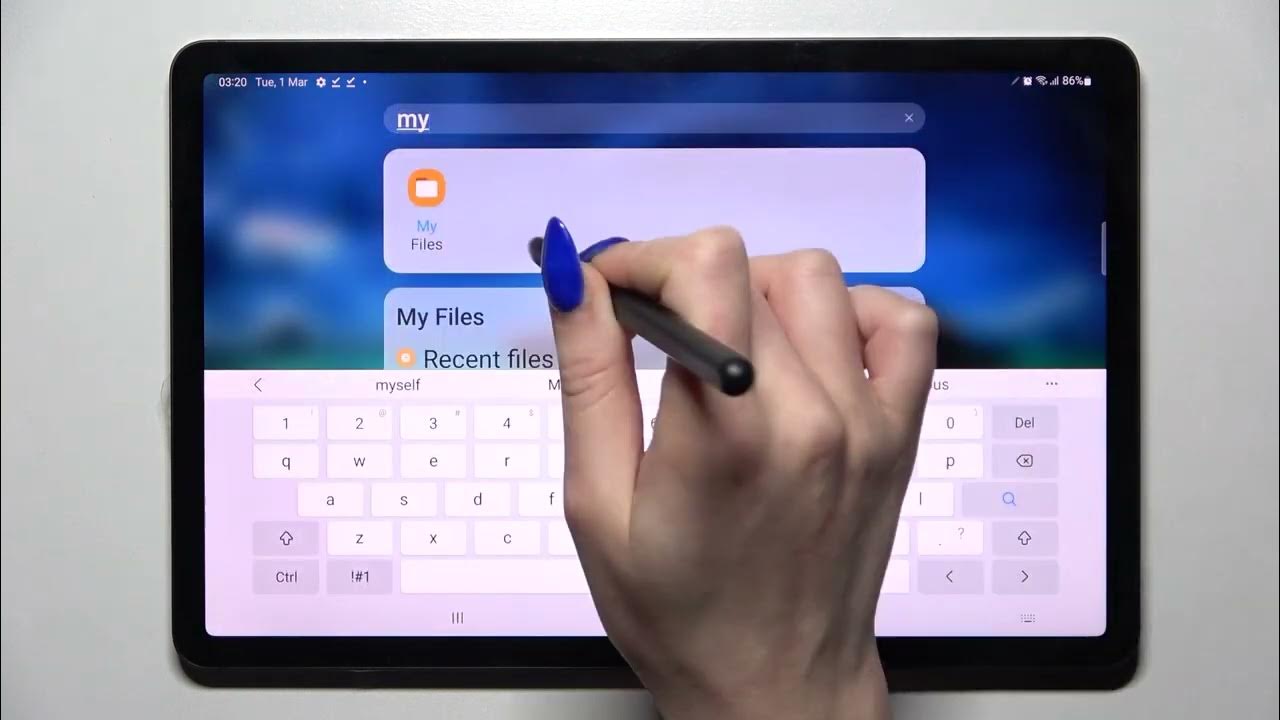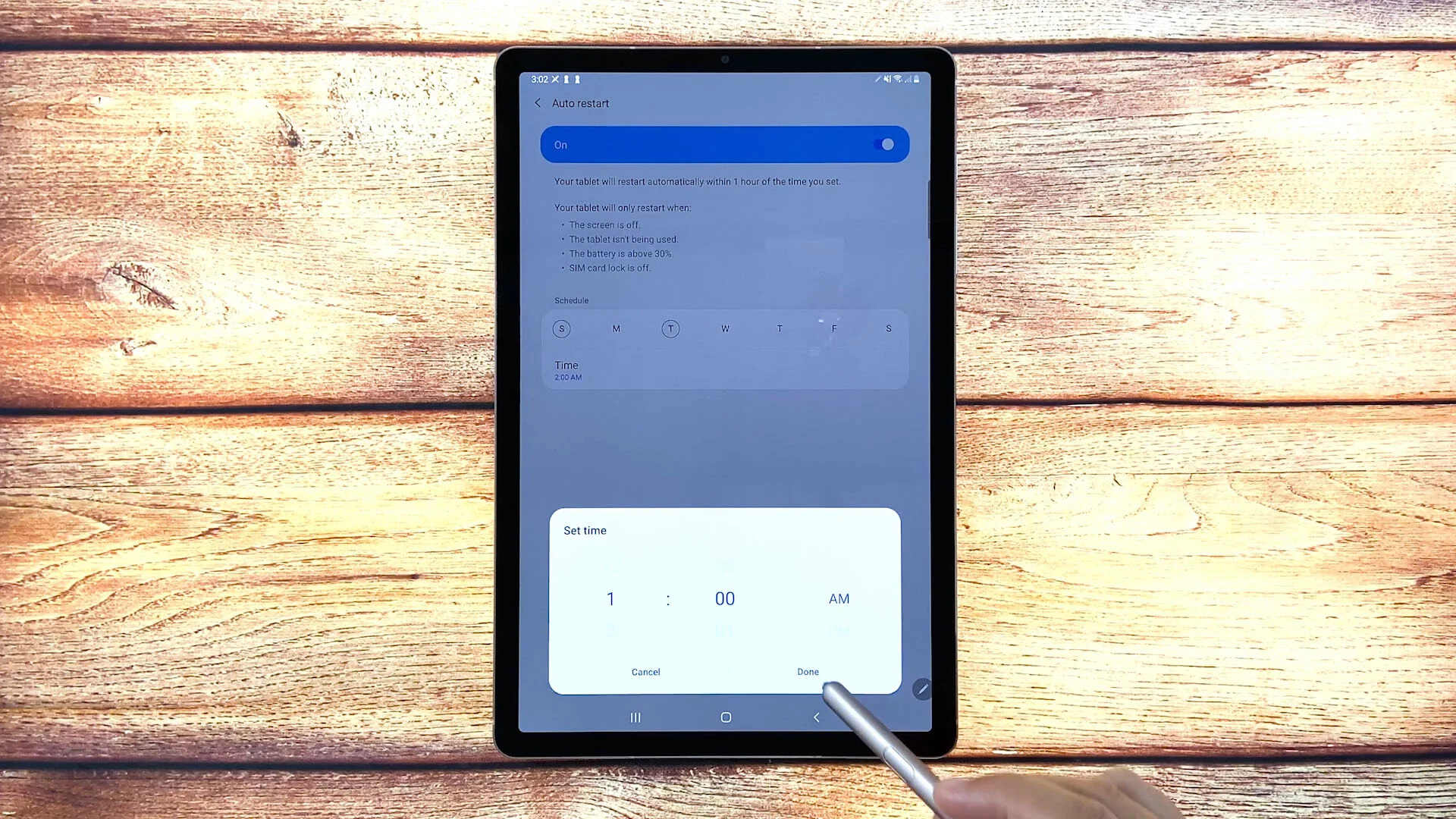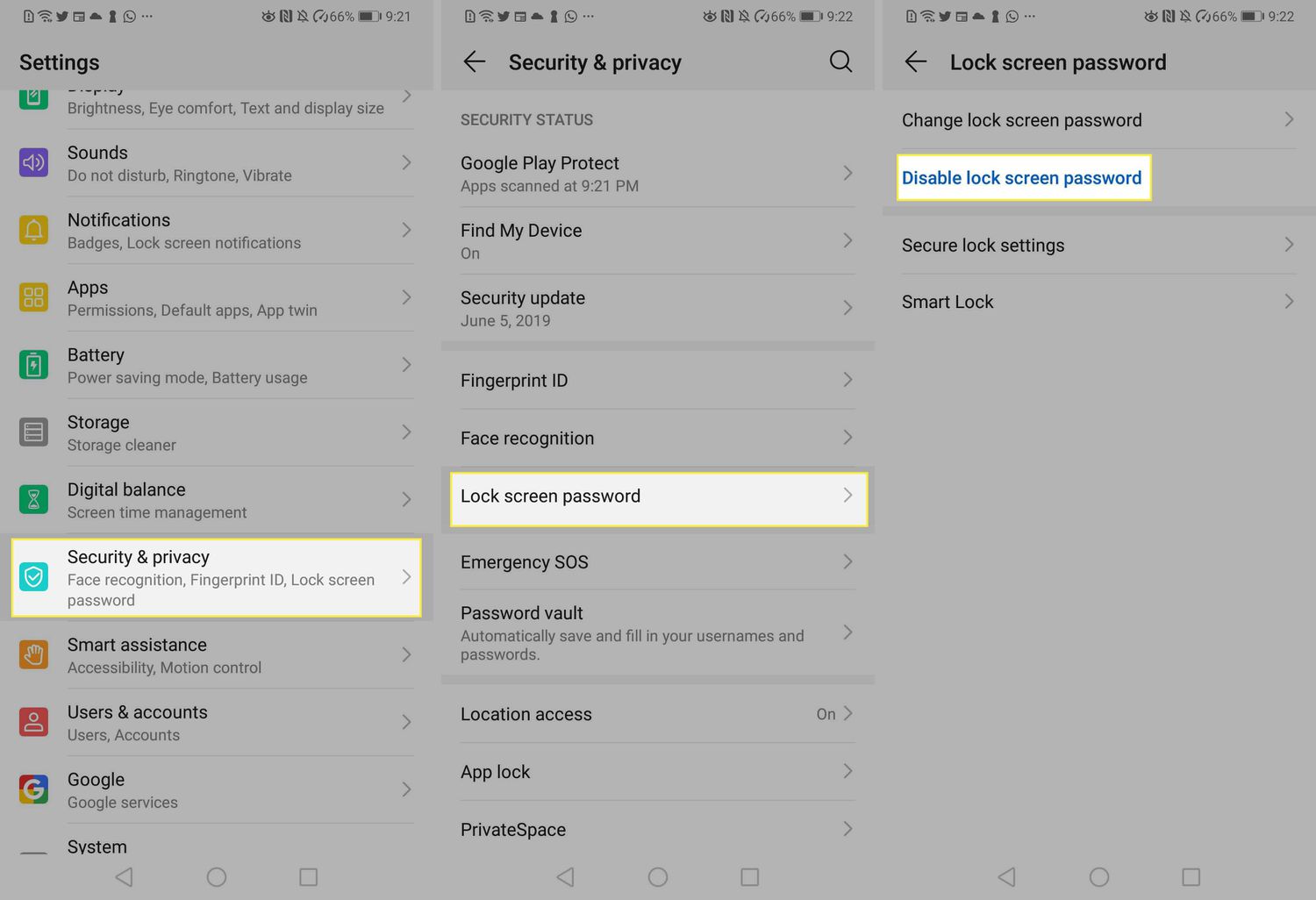Introduction
Welcome to our guide on how to change the home screen on your Samsung tablet. The home screen is the starting point of your tablet experience, and personalizing it gives you the opportunity to make your device truly feel like your own. Whether you want to change the wallpaper, rearrange app icons, or customize app shortcuts, we’ve got you covered.
With its user-friendly interface and customizable features, Samsung tablets offer plenty of options to make your home screen reflect your personal style and preferences. Whether you prefer a minimalist design or a vibrant and colorful layout, you can easily tailor your home screen to suit your needs.
In this guide, we will take you through the step-by-step process of changing the home screen on your Samsung tablet. We will cover everything from unlocking your tablet to customizing app shortcuts and rearranging app icons. By the end of this guide, you will have the tools you need to create a home screen that is both visually appealing and functional.
So, without further ado, let’s dive right in and explore the various ways you can personalize and change the home screen on your Samsung tablet. Get ready to unleash your creativity and make your tablet experience truly your own.
Step 1: Unlock your Samsung tablet
The first step to changing your home screen on a Samsung tablet is to unlock your device. To do this, simply press the power button or the home button (depending on the model) and swipe your finger across the screen to unlock it.
If you have set up a security method such as a PIN, password, or fingerprint, you will need to enter it to unlock your tablet. This ensures that only authorized individuals can access your device.
Once your tablet is unlocked, you are ready to begin customizing your home screen.
Pro tip: If you find entering a PIN or password every time you unlock your tablet inconvenient, consider using the fingerprint or facial recognition feature available on some Samsung tablet models for a quicker and more secure unlocking experience. Simply set up these features in your device settings.
Now that your tablet is unlocked, let’s move on to the next step and explore how to access the home screen settings.
Step 2: Go to the home screen settings
Once your Samsung tablet is unlocked, you can access the home screen settings to begin customizing it. Here’s how:
- Tap on the Apps icon, usually located in the bottom center or bottom right corner of the home screen. It looks like a grid of small squares.
- Scroll through the apps until you find the Settings app and tap on it. The Settings app is represented by a gear icon.
- In the Settings menu, scroll down and look for the Display option. Tap on it to proceed.
- Within the Display settings, you will find various options related to the home screen. Look for the Home Screen option and tap on it.
Alternatively, on some Samsung tablet models, you may find a shortcut to the home screen settings by performing a long press on an empty space on the home screen. This will bring up a menu where you can select the desired settings option.
Now that you are in the home screen settings menu, you are ready to explore the different customization options available to you. In the next step, we will show you how to change the wallpaper on your Samsung tablet’s home screen.
Step 3: Change the wallpaper
Changing the wallpaper on your Samsung tablet’s home screen can instantly transform its look and feel. Here’s how you can do it:
- Go to the home screen settings as mentioned in Step 2.
- Within the Home Screen settings, look for the Wallpaper option and tap on it.
- You will now see a list of different wallpaper options. Choose one of the pre-installed wallpapers by tapping on it, or select the Gallery option to choose an image from your device’s photo gallery.
- If you choose the Gallery option, browse through your photos and select the image you want to set as your wallpaper. You may need to crop the photo to fit your tablet’s screen dimensions.
- Once you have selected the desired wallpaper, tap on Set Wallpaper to apply it to your home screen.
That’s it! Your Samsung tablet’s home screen now sports a fresh new look with the chosen wallpaper. Take some time to explore the different wallpaper options available to find one that reflects your personal style and preferences.
Pro tip: To add an extra touch of personalization, you can also set different wallpapers for the lock screen and the home screen. This allows you to have unique backgrounds for each screen and further customize your tablet’s overall appearance.
Now that you have changed the wallpaper, let’s move on to the next step and learn how to rearrange app icons on your Samsung tablet’s home screen.
Step 4: Rearrange app icons
Customizing the layout and organization of your app icons on the home screen can help you find your frequently used apps more easily. Here’s how to rearrange app icons on your Samsung tablet:
- Long press on any app icon on the home screen until the icons start to wiggle or a menu appears.
- Once the icons are wiggling, you can drag and drop the app icons to your desired location. Move an app icon by touching and holding it, then sliding your finger to the desired position on the screen.
- If you want to move an app icon to a different home screen panel, simply drag it to the edge of the screen, and the screen will automatically scroll to the next panel.
- If you have multiple home screen panels, you can also rearrange app icons by navigating to the desired panel first and then following the same drag and drop process.
- To create folders for organizing similar apps together, drag one app icon onto another app icon. This will create a folder that you can name and populate with apps.
- If you want to remove an app from the home screen, long press on the app icon until the options menu appears, and then select the Remove or Delete option.
By rearranging your app icons, you can declutter your home screen and create a layout that suits your preferences and usage habits. Take some time to arrange your app icons in a way that makes it easy and intuitive for you to access your favorite apps.
Now that you have organized your app icons, let’s move on to the next step and explore how to customize app shortcuts on your Samsung tablet’s home screen.
Step 5: Customize app shortcuts
Customizing app shortcuts on your Samsung tablet’s home screen allows you to access your favorite apps with just a single tap. Here’s how you can customize app shortcuts:
- Long press on the app icon you want to customize. This will bring up a menu of options related to that app.
- From the options menu, select the option for Edit or App info. The exact wording may vary depending on your tablet model and Android version.
- You will now be taken to the app’s settings page. Look for the Add shortcut to home screen or Add to home screen option and tap on it.
- A shortcut for the app will now be added to your home screen. You can further customize the shortcut’s appearance by long pressing on it and selecting Edit.
- From the edit options, you may be able to change the name of the shortcut or even select a different icon for it.
- Once you are satisfied with the customization, tap on Done or Save to apply the changes.
By customizing app shortcuts, you can create a home screen layout that gives you quick access to the apps you use most frequently. Whether it’s your favorite social media app, a productivity tool, or a gaming app, having customized app shortcuts makes navigating your tablet a breeze.
Take some time to organize your home screen with app shortcuts that reflect your preferences and usage habits. This will help you streamline your tablet experience and save valuable time in finding and launching your favorite apps.
In the next step, we will explore how to add or remove home screen panels on your Samsung tablet.
Step 6: Add or remove home screen panels
Adding or removing home screen panels on your Samsung tablet allows you to expand or streamline your home screen space. You can add panels to accommodate more app icons and widgets, or remove panels to keep your home screen layout focused and clutter-free. Here’s how you can add or remove home screen panels:
- Pinch your fingers together on the home screen to access the overview mode. This will display all the existing home screen panels as thumbnails.
- From the overview mode, look for the Add or + button/button located at either the top or bottom of the screen, depending on your tablet model and Android version. Tap on it to add a new home screen panel.
- You can also add a new panel by dragging an app icon or widget to the edge of the screen until a new panel is created.
- To remove a home screen panel, pinch your fingers together on the screen to access the overview mode. Then, tap and hold on the panel you want to remove, and drag it to the Remove or Delete option that appears.
- You can rearrange the order of your home screen panels by tapping and holding on a panel thumbnail in the overview mode, and then dragging it to the desired position.
- Once you are satisfied with the arrangement of your home screen panels, tap anywhere outside the overview mode to exit and apply the changes.
Adding or removing home screen panels gives you the flexibility to customize your tablet’s home screen layout according to your needs. Whether you want a single, clutter-free panel or multiple panels to accommodate your favorite apps and widgets, adjusting the number of home screen panels allows you to create a personalized and organized experience.
Now that you know how to add or remove home screen panels, we’ll move on to the next step and explore how to enable or disable the app drawer feature on your Samsung tablet.
Step 7: Enable or disable the app drawer
The app drawer is a convenient feature on your Samsung tablet that organizes all your installed apps in a separate space, making it easy to locate and access them. While the app drawer is enabled by default on most Samsung tablets, you have the option to disable it if you prefer a different layout. Here’s how you can enable or disable the app drawer:
- Go to the home screen settings as mentioned in Step 2.
- Within the Home Screen settings, look for the App Drawer option and tap on it.
- If the app drawer is currently enabled, you will see the option to disable it. Tap on the toggle switch to turn it off.
- If the app drawer is currently disabled, you will see the option to enable it. Tap on the toggle switch to turn it on.
- After enabling or disabling the app drawer, your home screen will be updated accordingly. If you enabled the app drawer, you will see a separate icon or swipe gesture to access it.
Disabling the app drawer merges all your apps onto the home screen panels, similar to other Android devices or older versions of Samsung’s user interface, while enabling it keeps your apps organized in the separate drawer.
Choose the option that suits your preference and usage style. If you prefer a clutter-free home screen with all your apps visible, disabling the app drawer may be a good choice. On the other hand, if you prefer a more organized and tidy layout, enabling the app drawer will help keep your home screen panels focused and uncluttered.
Now that you know how to enable or disable the app drawer, let’s move on to the final step and explore how to change the home screen grid layout on your Samsung tablet.
Step 8: Change the home screen grid layout
The home screen grid layout determines how your app icons and widgets are arranged on the screen. Changing the grid layout allows you to customize the density and organization of your home screen items. Here’s how you can change the grid layout on your Samsung tablet:
- Go to the home screen settings as mentioned in Step 2.
- Within the Home Screen settings, look for the Home Screen Grid or Grid Size option and tap on it.
- You will be presented with different grid options, such as 4×4, 5×5, or 6×6. The numbers represent the number of rows and columns of app icons and widgets that can fit on the home screen.
- Select the grid size that suits your preference by tapping on it.
- Your home screen will be updated with the new grid layout, adjusting the spacing and arrangement of app icons and widgets accordingly.
Changing the home screen grid layout allows you to customize the look and feel of your home screen to better suit your needs and preferences. A denser grid layout (e.g., 6×6) allows you to fit more app icons and widgets on the screen, providing quick access to a larger number of apps. On the other hand, a larger grid layout (e.g., 4×4) provides more spacing and a less crowded appearance, which may be preferred for a minimalist aesthetic.
Take some time to experiment with different grid layouts and find the one that works best for you. Keep in mind that as you change the grid size, you may need to rearrange your app icons and widgets to optimize the new layout.
Now that you have learned how to change the home screen grid layout, you have the knowledge to fully customize the organization and appearance of your Samsung tablet’s home screen.
Conclusion
Personalizing and changing the home screen on your Samsung tablet is a fun and rewarding process that allows you to create a unique and tailored experience. By following the steps outlined in this guide, you can unlock the full potential of your device and make it truly your own.
The journey begins with unlocking your tablet and accessing the home screen settings. From there, you can change the wallpaper to reflect your style and preferences, rearrange app icons for easier access, and customize app shortcuts to quickly launch your favorite apps.
Adding or removing home screen panels gives you the flexibility to expand or streamline your home screen space, while enabling or disabling the app drawer provides options for organizing your apps. Finally, changing the home screen grid layout allows you to customize the density and organization of app icons and widgets on the screen.
Remember, the home screen of your Samsung tablet is your digital domain, where you have the power to arrange and design it to suit your needs and preferences. Explore different options, experiment with layouts, and have fun making it truly yours.
Now that you are armed with the knowledge and steps to change your home screen, go ahead and unleash your creativity. Personalize your Samsung tablet’s home screen and make it a true reflection of your unique style and personality.







